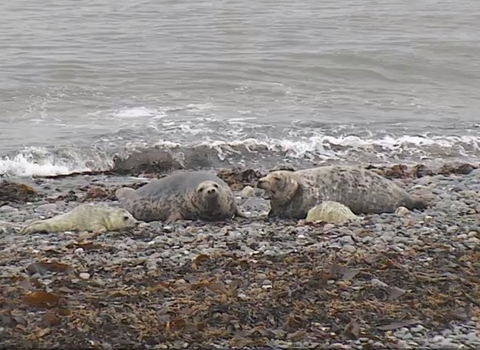
Grey seal © Rob Jordan/2020VISION
Grey seal
Scientific name: Halichoerus grypus
A great way to see grey seals is to watch our grey seal cam at South Walney Nature Reserve.
Have you ever seen the curious face of a grey seal bobbing in the waves when visiting the beach? Grey seals can be seen lying on beaches waiting for their food to go down. Sometimes they are accompanied by their white fluffy seal pups that look like balls of cotton wool!
Species information
Category
Marine mammals and sea turtles
Statistics
Length: up to 2.6m Weight: Males up to 300kg, females up to 200kg. Average Lifespan: 30-40 years
Conservation status
Protected in Britain under the Conservation of Seals Act 1970. Also protected under the Wildlife (Northern Ireland) Order 1985 and the Marine (Scotland) Act 2010.
When to see
January to December
About
The grey seal is the larger of the two UK seal species. If you catch a good look at them you’ll see how they got their scientific name Halichoerus grypus – it means hook-nosed sea pig! These mammals spend most of their time out at sea feeding on fish. They return to land to rest and can often be seen ‘hauled out’, lying on British beaches. Grey seals give birth to fluffy white pups in the autumn. These adorable pups stay on land until they have lost their white coats and trebled their body weight.
How to identify
The grey seal can be distinguished from the common seal by its larger size and longer head with a sloping 'roman nose' profile. Looking straight on, their nostrils are parallel, rather than v-shaped as in common seals. Mainly grey in colour, the unique pattern of darker blotches and spots can be used to identify individuals.
Distribution
Found all around the UK.
Habitats
Did you know?
Despite numbers dropping to only 500 in the early 20th century, it's estimated that there are now more than 120,000 grey seals in Britain, representing 40% of the world's population and 95% of the European population.




